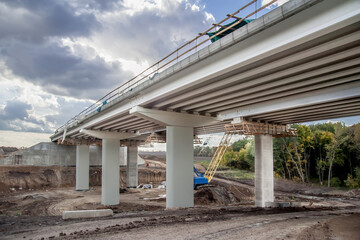Contact Us
RoadVision AI
Private Limited
Office No. 308 & 310, B Block
Ansal Chamber - 1, Bhikaji Cama Place,
Near Engineers India Limited (EIL) Bhawan, New Delhi - 110066
© 2024 | RoadVision AI | All rights reserved
Infrastructure development is a cornerstone of economic growth, and modern machinery plays a vital role in building robust roads and bridges. The IRC Code SP 29, titled "Directory of Indigenous Manufacturers of Road/Bridge Construction Machinery and Important Bridge Components (First Revision, 1994)," serves as a comprehensive resource for highway engineers, contractors, and policymakers. This blog delves into the essence of this code, its purpose, and its significance in India's journey toward self-reliant infrastructure development.

Published by the Indian Roads Congress (IRC), this directory was first introduced in 1984 and revised in 1994 to reflect advancements in technology and the increasing demand for mechanized construction. It is a meticulously compiled guide that lists indigenous manufacturers of machinery and components essential for road and bridge construction. The directory also highlights the importance of local production to reduce dependency on imports and foster economic growth.
The document includes an extensive list of Indian manufacturers, categorized based on the machinery and components they produce. Some of the notable categories are:
Manufacturers are listed alongside their products' sizes, capacities, and technical specifications, providing engineers with a quick reference to choose the right equipment for their projects.
The code emphasizes the importance of using locally manufactured equipment. It marks a significant shift from the earlier reliance on imported machinery to indigenous production, a change initiated during India's push for industrialization.
Mechanized construction has transformed the way roads and bridges are built. IRC SP 29 outlines the benefits of using machinery:
The push for indigenous manufacturing aligns with national policies like "Make in India," focusing on reducing imports and encouraging domestic production. Key benefits include:
Highway engineers and contractors benefit greatly from the directory:
IRC Code SP 29 is more than just a directory; it is a vital tool that bridges the gap between infrastructure demands and resource availability. By promoting indigenous manufacturing, the code not only supports India’s infrastructure growth but also strengthens the country’s industrial base. It remains an invaluable resource for building sustainable, high-quality road and bridge networks.
RoadVision AI is revolutionizing roads AI and transforming infrastructure development and maintenance with its innovative solutions in AI in roads. By leveraging Artificial Intelligence, digital twin technology, and advanced computer vision, the platform conducts thorough road safety audits, ensuring the early detection of potholes and other surface issues for timely repairs and improved road conditions. The integration of potholes detection and data-driven insights through AI also enhances traffic surveys, addressing congestion and optimizing road usage. Focused on creating smarter roads, RoadVision AI ensures compliance with IRC Codes, empowering engineers and stakeholders to reduce costs, minimize risks, and elevate road safety and transportation efficiency.